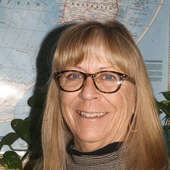- Research tips and McCook Brick Company- solid as a brick (12/16/24)
- Big Give appreciation and some railroad characters (11/15/24)
- George Randel becomes a landowner, gets married, and takes in a Buffalo Bill show (9/20/24)
- The memoirs of George F. Randel, early settler of Red Willow County (9/12/24)
- Vietnam War Memorial honors Nebraskans who served (6/13/24)
- McCook business promotions - just prior to 1893 stock market crash (5/30/24)
- Shall we dance? Meet you at the Gayway (12/8/23)
Marion once thriving community
Friday, January 17, 2020
The many schools that existed when I was young have joined into few, and as the schools left, the glue that held the community together dissipated. The school building was often the largest building available and served many functions beyond educating the precious children each family sent off to be taught the three “R’s” ; reading, writing, arithmetic.
Marion was never a huge community, but it did have the advantage of being close to the rail and the main highway. The families that surrounded it were farmers, the village businesses serving that occupation with an elevator, a blacksmith, etc.
Train travel allowed the residents to travel between towns on Beaver Creek, to ship goods, visit relatives or pick up supplies in larger communities along the line. An example comes from the McCook Tribune, March 14, 1902: “Mrs. Tom Dimmitt was a passenger from Marion to Danbury, last Saturday, this being the first lady passenger from this place.”
“Melvin Rodabaugh was at Lebanon between trains, Friday. He went to a doctor to have the X-ray used on his ankle, which he strained some time ago and found a bone had been cracked.” McCook Tribune, February 19, 1909.
From the same paper: “Mrs. Newberry and two boys went to Danbury on Saturday evening, going down on the passenger (train) and returning on the freight.”
Marion’s news in the McCook Tribune centered around the activities of locals and many of those were held in the Shiloh school, the building also serving as a church and meeting place: “Shiloh Sunday School will observe Children’s Day, for which an interesting program is now being prepared.” McCook Tribune, May 23, 1902.
McCook Tribune, February 6, 1903, gives us a hint of some of the families whose children attended that school: “Report of Shiloh school-Those neither tardy nor absent during the month beginning January 5th and ending January 30th: Gertie Naden, James Matson, Ralph Boyer, Calvin Steele, Ella Steele, Lloyd Lafferty, Laura Murphy, Myrtle Boyer, Loyd Spore, Florys Spore- Ena Gambsy, Teacher.”
The prowess of the farming community was shown when the results of the County Fair were printed in the McCook Tribune, November 3, 1910 where both Lowell Pew and Lloyd Neitzel won for their onion entries. Flosie Plumb took home a $ 1.50 prize for her wheat bread while Neta Stilgebouer won $2.00 for her rolls. Myrtle Miller’s jelly netted her a $ 1.00 purse.
Perhaps the best representation of farm produce came in February,1909 when the Marion column in the McCook Tribune boasted: “Harry Gockley, from northwest of town, was awarded 2nd prize in the junior class comprising the western half of Nebraska on ten ears of corn at the national corn show at Omaha the first of the year and received a trio of Buff Rock chickens valued at $20. He received the birds one day last week.”
Many mentions are made of shipping cattle, alfalfa and other farm goods but an interesting farm goods trade was noted in the McCook Tribune, September 9, 1911: “A. C. Pew traded his alfalfa prospects to Alfred Aston of Cedar Bluffs for his auto.”
A rich history of this area is found along the Beaver Creek and the fading of the communities does not alter it. Like their cohorts along the north, east, and west boundaries of Red Willow County, their settlers did as much to help this area prosper as did anyone from McCook. We should not forget their contributions, then, and now.
SWNGS library is back on schedule, weather permitting. Open from 1-4 on Tuesday and Thursday, we are located at 110 West C, Suite M-3.

